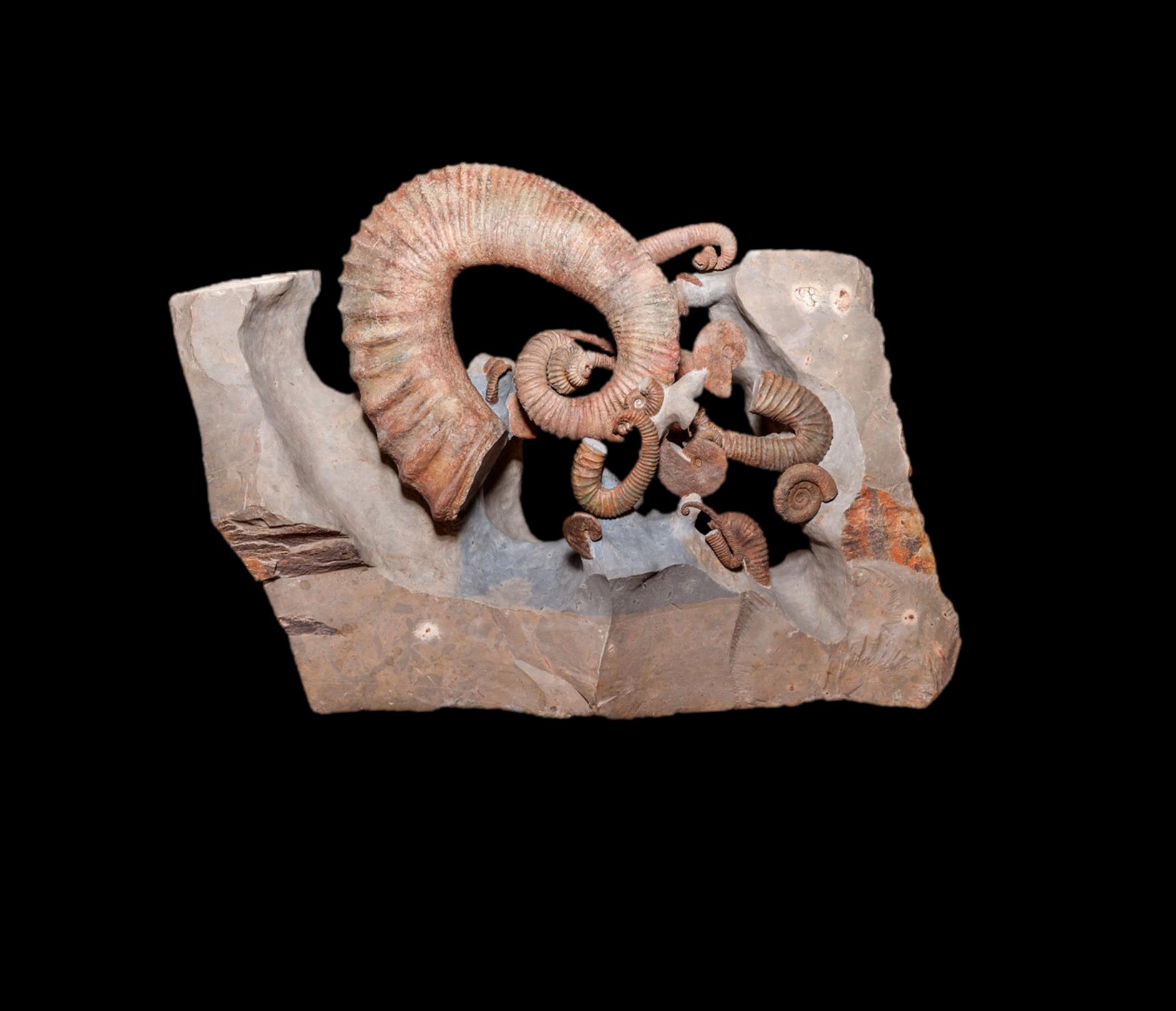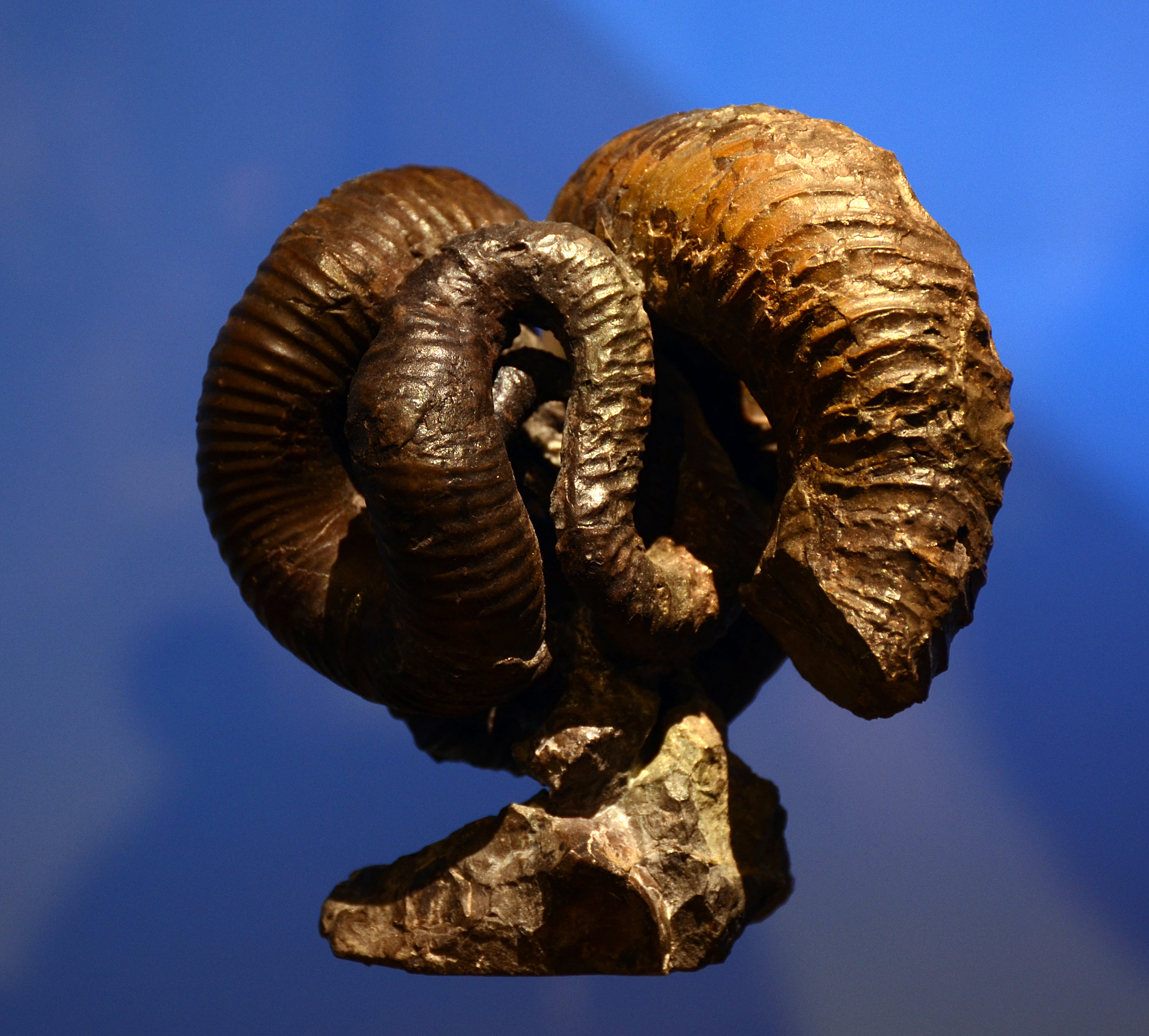Ancyloceratina on:
[Wikipedia]
[Google]
[Amazon]
The Ancyloceratina were a diverse suborder of ammonite most closely related to the ammonites of order
 Ancyloceratida varied widely in size, ranging from diminutive ''Ptychoceras'', which was barely long, to ''Baculites'' and '' Diplomoceras'', which could grow to in length. Some species were very widely distributed, for example some species of ''Hamites'' can be found in
Ancyloceratida varied widely in size, ranging from diminutive ''Ptychoceras'', which was barely long, to ''Baculites'' and '' Diplomoceras'', which could grow to in length. Some species were very widely distributed, for example some species of ''Hamites'' can be found in


 Suborder Ancyloceratina
* Superfamily
Suborder Ancyloceratina
* Superfamily
Scientific report on the functional morphology of Cretaceous heteromorph ammonites
* {{Taxonbar, from=Q290948 Ammonitida suborders Prehistoric animal suborders Mollusc suborders Late Jurassic first appearances Maastrichtian extinctions
Lytoceratina
Lytoceratina is a Suborder (biology), suborder of Jurassic and Cretaceous Ammonitida, ammonites that produced loosely coiled, evolute and gyroconic shells in which the sutural element are said to have complex moss-like endings.
Morphologic chara ...
. They evolved during the Late Jurassic
The Jurassic ( ) is a geologic period and stratigraphic system that spanned from the end of the Triassic Period million years ago (Mya) to the beginning of the Cretaceous Period, approximately Mya. The Jurassic constitutes the middle period of ...
but were not very common until the Cretaceous
The Cretaceous ( ) is a geological period that lasted from about 145 to 66 million years ago (Mya). It is the third and final period of the Mesozoic Era, as well as the longest. At around 79 million years, it is the longest geological period of ...
period, when they rapidly diversified and became one of the most distinctive components of Cretaceous marine faunas. They have been recorded from every continent and many are used as zonal or index fossil
Biostratigraphy is the branch of stratigraphy which focuses on correlating and assigning relative ages of rock strata by using the fossil assemblages contained within them.Hine, Robert. “Biostratigraphy.” ''Oxford Reference: Dictionary of Bio ...
s. The most distinctive feature of the majority of the Ancyloceratina is the tendency for most of them to have shells that are not regular spirals like most other ammonites. These irregularly-coiled ammonites are called heteromorph ammonites, in contrast to regularly coiled ammonites, which are called homomorph ammonites.
Biology
The biology of the heteromorph ammonites is not clear, but one certainty is that their uncoiled shells would have made these forms very poor swimmers. Open shells, particularly ones with spines and ribs, create a lot of drag; but more importantly, the orientation of the shell, with the body hanging below the buoyant part of the shell, would have created a serious impediment to efficient swimming. It's more likely these ammonites either drifted in theplankton
Plankton are the diverse collection of organisms found in water (or air) that are unable to propel themselves against a current (or wind). The individual organisms constituting plankton are called plankters. In the ocean, they provide a crucia ...
, collecting small animals on long tentacle
In zoology, a tentacle is a flexible, mobile, and elongated organ present in some species of animals, most of them invertebrates. In animal anatomy, tentacles usually occur in one or more pairs. Anatomically, the tentacles of animals work ma ...
s like modern jellyfish
Jellyfish and sea jellies are the informal common names given to the medusa-phase of certain gelatinous members of the subphylum Medusozoa, a major part of the phylum Cnidaria. Jellyfish are mainly free-swimming marine animals with umbrell ...
, or else they crawled along the sea floor feeding on sessile or slow-moving animals such as clam
Clam is a common name for several kinds of bivalve molluscs. The word is often applied only to those that are edible and live as infauna, spending most of their lives halfway buried in the sand of the seafloor or riverbeds. Clams have two shel ...
s.
Morphology
 Ancyloceratida varied widely in size, ranging from diminutive ''Ptychoceras'', which was barely long, to ''Baculites'' and '' Diplomoceras'', which could grow to in length. Some species were very widely distributed, for example some species of ''Hamites'' can be found in
Ancyloceratida varied widely in size, ranging from diminutive ''Ptychoceras'', which was barely long, to ''Baculites'' and '' Diplomoceras'', which could grow to in length. Some species were very widely distributed, for example some species of ''Hamites'' can be found in Eurasia
Eurasia (, ) is the largest continental area on Earth, comprising all of Europe and Asia. Primarily in the Northern and Eastern Hemispheres, it spans from the British Isles and the Iberian Peninsula in the west to the Japanese archipelago ...
, South America
South America is a continent entirely in the Western Hemisphere and mostly in the Southern Hemisphere, with a relatively small portion in the Northern Hemisphere at the northern tip of the continent. It can also be described as the sout ...
, Australia, and Antarctica
Antarctica () is Earth's southernmost and least-populated continent. Situated almost entirely south of the Antarctic Circle and surrounded by the Southern Ocean, it contains the geographic South Pole. Antarctica is the fifth-largest cont ...
. Others, like those inhabiting the Western Interior Seaway
The Western Interior Seaway (also called the Cretaceous Seaway, the Niobraran Sea, the North American Inland Sea, and the Western Interior Sea) was a large inland sea that split the continent of North America into two landmasses. The ancient sea ...
that covered much of the US, were much more localized.
In the more primitive forms, the shell departs only slightly from being a perfect spiral, with only the last, outermost whorl being open, forming a hook underneath the main spiral. In such forms the spiral was the chambered, buoyant
Buoyancy (), or upthrust, is an upward force exerted by a fluid that opposes the weight of a partially or fully immersed object. In a column of fluid, pressure increases with depth as a result of the weight of the overlying fluid. Thus the pr ...
part of the shell, and the hook was the living chamber in which the soft body of the ammonite resided. Examples of such types were '' Ancyloceras'', '' Protanisoceras'', and ''Tropaeum
''Tropaeum'' is an extinct genus of ammonites found throughout the oceans of the world during the Early Cretaceous. As with many other members of the family Ancyloceratidae, there was a trend among species within this genus to uncoil somewhat, ...
''. The more advanced heteromorphs departed from such forms radically. The shells of '' Ptychoceras'' consisted of three or four shafts squashed together and connected with tight, 180 degree bends. Members of the genus ''Hamites
Hamites is the name formerly used for some Northern and Horn of Africa peoples in the context of a now-outdated model of dividing humanity into different races which was developed originally by Europeans in support of colonialism and slavery ...
'' were much larger but had a similar sort of shape, though the shafts were open so that the whole thing looked rather like a big paper clip
A paper clip (or paperclip) is a tool used to hold sheets of paper together, usually made of steel wire bent to a looped shape (though some are covered in plastic). Most paper clips are variations of the ''Gem'' type introduced in the 1890s or e ...
.
Many of the earlier heteromorph forms had regularly coiled shells barely distinguishable from the homomorph ammonites (for example, the Lower Cretaceous genus '' Deshayesites''). Some offshoots of the uncoiled varieties even went back to being regularly coiled. Most notable among these were the ''Scaphites
''Scaphites'' is a genus of heteromorph ammonites belonging to the Scaphitidae family. They were a widespread genus that thrived during the Late Cretaceous period.
Morphology
''Scaphites'' generally have a chambered, boat-shaped shell. The ini ...
'', '' Hoploscaphites'' and their relatives, which were mostly regular spirals in shape except for a very slight hook at the end.
The Late Cretaceous enjoyed the widest variety of heteromorphs, including the straight-shelled ''Baculites
''Baculites'' ("walking stick rock") is an extinct genus of cephalopods with a nearly straight shell, included in the heteromorph ammonites. The genus, which lived worldwide throughout most of the Late Cretaceous, and which briefly survived the ...
'' and '' Sciponoceras''; the helically coiled '' Turrilites''; and the bizarre '' Nipponites'', which looked more like a ball of string than anything else. Some forms combined different coiling modes. For example, ''Nostoceras
''Nostoceras'' is an extinct genus of ammonites. The etymology of the name ''Nostoceras'' comes from "nostos" meaning return and "ceros" meaning horn, named as such by Alpheus Hyatt because it bends back on itself.
Taxonomy
''Nostoceras'' is the ...
'' started off with a helix like a ''Turrilites'', but had a planar hook hanging underneath, more like an ''Ancyloceras''.
The thin shelled heteromorphic ammonites probably lived at depths .
Classification


 Suborder Ancyloceratina
* Superfamily
Suborder Ancyloceratina
* Superfamily Ancyloceratoidea
Ancyloceratoidea, formerly Ancylocerataceae, is a superfamily of typically uncoiled and loosely coiled heteromorph ammonoids established by Alpheus Hyatt in 1900, that may contain as many as 11 families, depending on the classification accepted ...
** Family Acrioceratidae
** Family Ancyloceratidae
** Family Bochianitidae
** Family Crioceratitidae
Crioceratitidae is an extinct cephalopod family belonging to the subclass Ammonoidea and included in the order Ammonitida.
Genera
* ''Acantholytoceras'' Spath, 1932
* ''Balearites
''Balearites'' is an extinct ancyloceratin genus included in ...
** Family Hamulinidae
** Family Hemihoplitidae
** Family Heteroceratidae
** Family Himantoceratidae
** Family Labeceratidae
** Family Macroscaphitidae
** Family Ptychoceratidae
* Superfamily Deshayesitoidea
** Family Deshayesitidae
** Family Parahoplitidae
* Superfamily Douvilleiceratoidea
** Family Astiericeratidae
** Family Douvilleiceratidae
Douvilleiceratidae is a family of ammonites. These fast-moving nektonic carnivores lived in the Cretaceous from 125.45 to 94.3 Ma.
Its fossil
A fossil (from Classical Latin , ) is any preserved remains, impression, or trace of any once- ...
** Family Trochleiceratidae
* Superfamily Scaphitoidea
Scaphitidae is a family of extinct cephalopods belonging to the family of heteromorph ammonites (suborder Ancyloceratina). There is a possible fossil record of them being the last ammonites with fossils dating to the Danian of the Paleocene in ...
** Family Scaphitidae
Scaphitidae is a family of extinct cephalopods belonging to the family of heteromorph ammonites (suborder Ancyloceratina). There is a possible fossil record of them being the last ammonites with fossils dating to the Danian of the Paleocene in D ...
* Superfamily Turrilitoidea
Turrilitoidea is a diverse superfamily of Cretaceous ammonites generally considered as heteromorphic and commonly included in the suborder Ancyloceratina. Shells of this diverse group do not coil planospirally, as typical for most ammonites, but ...
** Family Anisoceratidae
** Family Baculitidae
** Family Diplomoceratidae
** Family Hamitidae
** Family Nostoceratidae
** Family Turrilitidae
Footnotes
References
* * Pasch, A. D., K. C. May. 2001. Taphonomy and paleoenvironment of hadrosaur (Dinosauria) from the Matanuska Formation (Turonian) in South-Central Alaska. In: ''Mesozoic Vertebrate Life''. Ed.s Tanke, D. H., Carpenter, K., Skrepnick, M. W. Indiana University Press. Pages 219–236.External links
Scientific report on the functional morphology of Cretaceous heteromorph ammonites
* {{Taxonbar, from=Q290948 Ammonitida suborders Prehistoric animal suborders Mollusc suborders Late Jurassic first appearances Maastrichtian extinctions